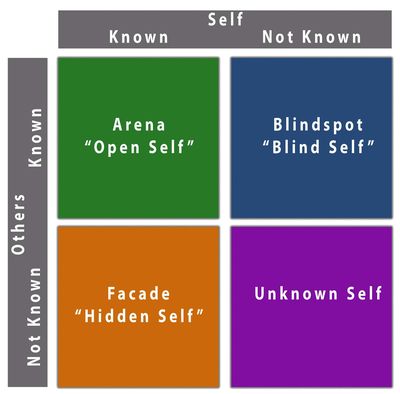Water Cooler: Increasing self-awareness with the Johari window

Self-awareness is an important tool for reflection and personal development that can help us better navigate our lives, set goals, strengthen our interpersonal relationships and improve our overall psychological wellbeing.
It comes about through the ability of metacognition, which is to think about thinking, know about knowing and being aware of one’s awareness.
This means that self-awareness is not just awareness of one’s environment, lifestyle or body, but it is the recognition of such awareness itself. As philosophical as that may sound, there are some very simple exercises that can help develop this skill.
One such exercise is the Johari window, which is a technique used to help people better understand themselves and how they are viewed by others. Luckily, it’s very simple to do virtually while in quarantine.
All it requires is one person as the subject and at least one other peer, such as a friend, romantic partner, relative or coworker.
The subject and their peers are provided with a list of adjectives. These can include anything that is descriptive of personality traits, such as accepting, adaptable, bold, calm, caring, cheerful, clever, dependable, dignified, empathetic, extroverted, giving, happy, idealistic, independent, intelligent, introverted, kind, logical, mature, proud, quiet, reflective, self-assertive, sensible, sentimental, silly, spontaneous, tense, trustworthy, warm, wise or witty.
The subject picks a number of adjectives they feel describes themselves while the peers pick a number of adjectives they feel describes the subject. It’s typical to choose at least 10 each.
The chosen adjectives or traits are then listed on the window, which is made of four quadrants. The upper half of the Y axis is labeled “known to others,” and the lower half is “not known to others.” The left of the X axis is labeled “known to self” and the right side is “not known to self.”
Adjectives selected by both the subject and peers are listed in the top left quadrant, the “arena.” This marks the overlap of traits that are known both to that person’s self and to others.
Adjectives selected by the peers but not the subject are listed in the top right quadrant, the “blindspot,” marking the traits the subject is unaware of but that others perceive. For example, perhaps you act a lot more cheerful, tense or confident than you actually feel or notice.
The bottom left quadrant, the “facade,” lists the adjectives selected only by the subject, noting which traits are known to the subject’s private self but aren’t perceived by or are hidden from others. For instance, maybe you are more introverted, silly, competitive or critical than how you let on.
Finally, the bottom right quadrant, the “unknown,” list the adjectives that were not selected by either party.
This method of exploring self-awareness is more practical for reaching a quick approximation than it is a deep dive into the self, but it’s a fun and accessible tool that anyone can use.
The results may differ depending on what peers you do the exercise with. For instance, a romantic partner will have a much different picture of you than your coworkers, but that’s also the point.
The Johari window can be applied to different realms of your life, potentially leading you to revelations about yourself in various contexts.
To apply the exercise therapeutically, you can aim to increase what is known about you, or your “arena.” This can be done by reducing your “facade,” or being better known by others, by practicing more self-disclosure.
You can better know yourself and reduce your “blindspot” by asking for feedback from others.
This may be easier said than done in real life situations, but it can be worth trying because being perceived drastically different than how you perceive yourself can be stressful, and learning how to better observe and learn about yourself can be deeply rewarding.